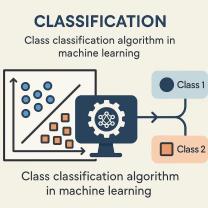What is the difference between binary code and decimal number?
Binary code and decimal numbers are two different systems for representing and working with numerical values. Here's an overview of the key differences between binary code and decimal numbers:
Decimal Number:
Base 10: The decimal number system is a base-10 system, which means it uses ten digits: 0, 1, 2, 3, 4, 5, 6, 7, 8, and 9.
Positional Notation: In the decimal system, each digit's value is determined by its position within the number. For example, in the number 123, the "1" represents one hundred, the "2" represents twenty, and the "3" represents three.
Value Range: Decimal numbers can represent a wide range of values and are commonly used in everyday life for counting, measuring, and performing arithmetic operations.
Human-Friendly: Decimal numbers are the most familiar and intuitive numerical system for humans. We use decimal numbers in everyday activities, such as writing down dates, measuring distances, and dealing with money.
Binary Code:
Base 2: The binary code is a base-2 system, which means it uses only two digits: 0 and 1.
Positional Notation: Similar to decimal, binary numbers also use positional notation. Each digit's value is determined by its position within the number. In binary, each position represents a power of 2.
Value Range: Binary is used in computing and digital systems to represent information using only 0s and 1s. It's primarily used for coding, storing, and processing information, including the operation of electronic devices and computers.
Machine-Friendly: Binary is not as intuitive for humans as decimal numbers are. However, it's extremely efficient for electronic devices because it corresponds directly to the on/off states of electronic switches (0 for off, 1 for on). This makes it the foundational system for all digital computing.
In summary, the main difference between binary code and decimal numbers lies in the base and the number of digits used. Decimal is base-10 and uses ten digits, while binary is base-2 and uses only two digits. Decimal is the standard numerical system for most everyday human activities, while binary is the fundamental language of computers and digital systems, representing data and instructions in a way that electronic devices can understand and process efficiently.
Exploring the Difference Between Binary Code and Decimal Numbers
Binary code is a base-2 number system, meaning that it uses only two digits, 0 and 1, to represent all numbers. Decimal numbers, on the other hand, are a base-10 number system, meaning that they use ten digits, 0 through 9, to represent all numbers.
Binary Code vs. Decimal Numbers: Characteristics and Uses
Binary code is the language that computers use to store and process data. It is also used in many other electronic devices, such as smartphones, digital cameras, and GPS devices. Binary code is very efficient for computers to use because it can be easily represented using electronic circuits.
Decimal numbers are the number system that we humans are most familiar with. We use decimal numbers in everyday life for things like counting money, measuring ingredients, and telling time. Decimal numbers are also used in many scientific and mathematical calculations.
Converting Between Binary and Decimal Systems
There are two main ways to convert between binary and decimal numbers:
- Using a conversion table: A conversion table is a table that shows the equivalent binary and decimal representations of all numbers.
- Using mathematical operations: It is also possible to convert between binary and decimal numbers using mathematical operations.
Example:
To convert the binary number 10101010 to decimal, we can use the following steps:
- Write the binary number in a column, with the rightmost digit at the bottom.
- Create a new column to the right of the binary number column.
- Write the powers of 2 in the new column, starting with 2 at the top and doubling each time.
- Multiply each digit in the binary number column by the corresponding power of 2 in the new column.
- Add the products in the new column.
The sum of the products is the decimal equivalent of the binary number.
In this example, the sum of the products is 170. Therefore, the decimal equivalent of the binary number 10101010 is 170.
Conclusion
Binary code and decimal numbers are two different number systems that are used for different purposes. Binary code is used by computers to store and process data, while decimal numbers are used by humans for everyday tasks and scientific and mathematical calculations. It is possible to convert between binary and decimal numbers using a conversion table or mathematical operations.












